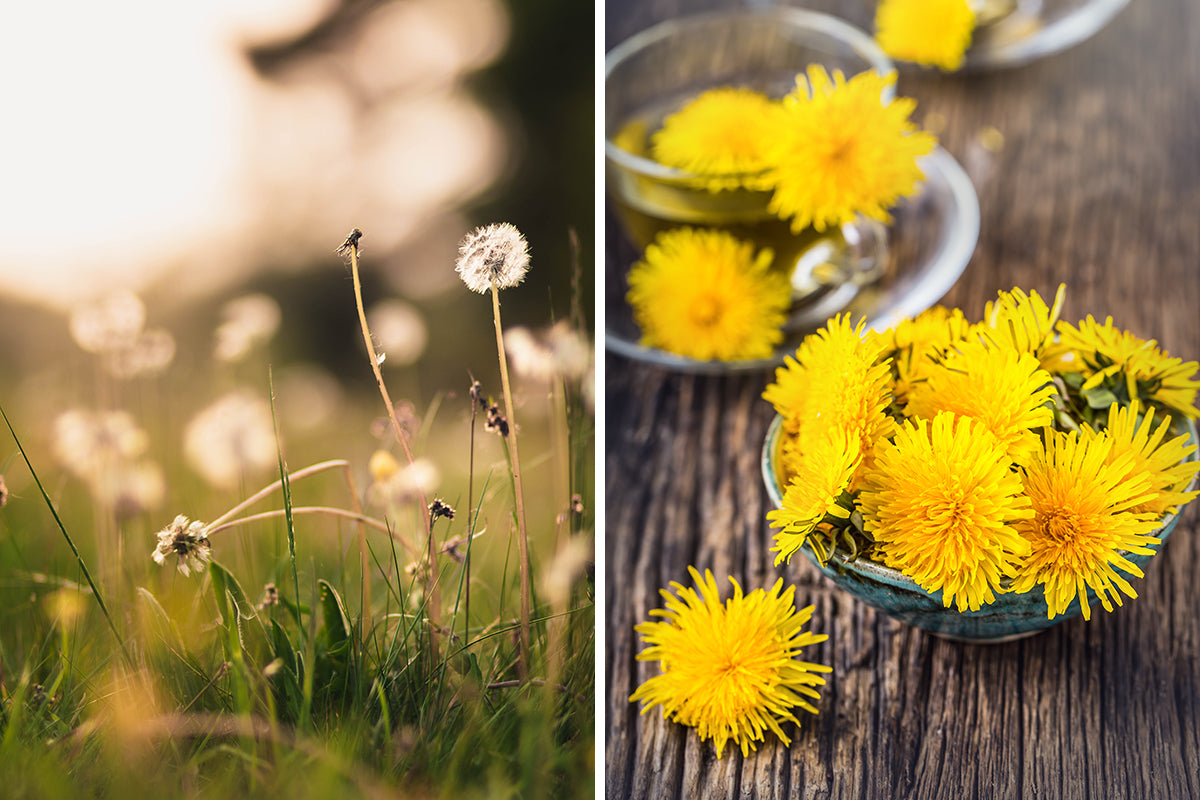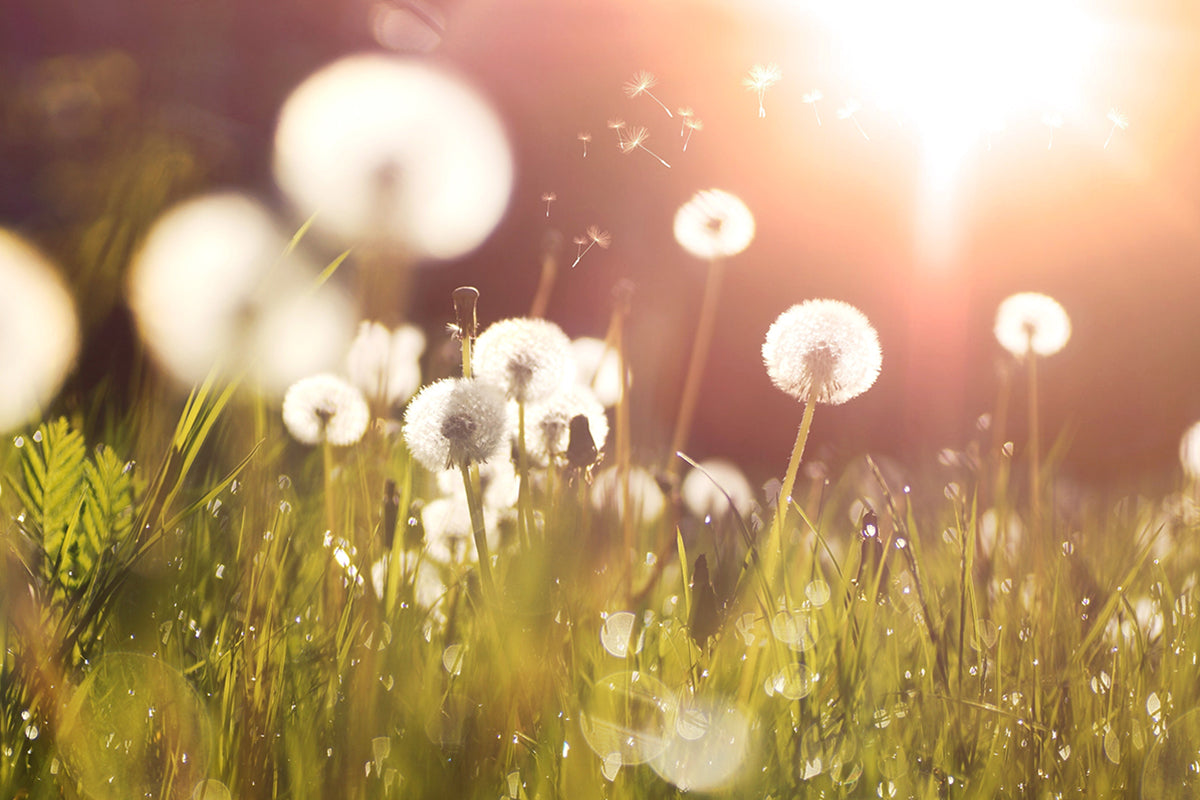With their cheerful yellow flowers, dandelions can now be found everywhere. It's likely one of the most recognizable plants in the world. And did you know there are more than a thousand species? Unfortunately, some species are becoming quite rare. In the past, meadows used to be completely yellow with dandelions, but now they are becoming less and less common. And yet, they are so important for biodiversity and our ecosystem. The flowers are a source of nectar and pollen for butterflies, bees, and other insects. In fact, the dandelion is the only native plant visited by more than 100 species of wild bees and other insects. And these insects are an important food source for the chicks of meadow birds. It's high time we start cherishing dandelions a bit more and appreciate their beauty again.
For thousands of years, dandelions have been used as food and for their medicinal properties. Every part of the plant, from the leaves to the flowers and the root, is packed with healthy nutrients and can be a valuable addition to your meal. In some cultures, it's still common to gather both the leaves, roots, and flowers in spring. The young leaves have a slightly bitter taste but are rich in vitamin A, C, K, the B vitamins, and minerals such as magnesium, calcium, potassium, selenium, and iron. If you cover the leaves with sand (blanching), the bitterness is reduced, similar to endive. In the past, people used to search molehills in spring for blanched dandelion leaves, hence the name 'mole salad'. You can tell how fresh the leaf is by looking at the stem: if white sap comes out, the salad is still quite fresh. official medicinal herb (Taraxacum officinale)
official medicinal herb (Taraxacum officinale)
The botanical name Taraxacum literally means remedy for disorders. As early as the 7th century, its medicinal effects against liver diseases were described in Chinese writings. From the 16th century, the dandelion was also recognized in the West as an official medicinal herb, with "officinale" as an addition. All 'officinalis plants' had to be present in every pharmacy. It's quite interesting that the medicinal effect against liver diseases has now also been scientifically confirmed. And how about making dandelion honey yourself? It's nutritious, medicinal, and very tasty, resembling the lightly sweet taste of honey indeed. In the past, they used to call it poor man's honey.
dandelion honey recipe
ingredients
- 100 dandelions
- 500 grams (brown) sugar
- 1/2 organic lemon
- 500 ml water
1. Pick 100 dandelions (only the flowers) on a sunny day so that they are fully open. Find a clean spot where no dogs walk and not along a road or meadow where spraying has been done. Always leave the majority of the flowers for the bees, as they also love dandelions. Put the flowers in a pan with 0.5 liters of water. You can use the whole flower, including the green crown, but when you only use the yellow petals, the honey tastes a bit sweeter. Cut half a lemon into slices and add it to the flower mixture in the pan. Let it simmer gently for 15 minutes with the lid on the pan. Turn off the heat and let the mixture steep for 24 hours.
2. Strain the mixture through a clean linen cloth and squeeze everything out well. You now have a dark yellow syrup. Add 500 grams of sugar to the syrup and let it simmer gently without the lid on the lowest flame. Stir well occasionally and check every half hour if the honey is thick enough. The honey is ready when it thickens slightly when stirred. Occasionally take a small spoonful and let it cool well, taste and see if the vegan honey doesn't get too dark. Pour the honey (as hot as possible) into sterilized glass jars. Optionally, use a funnel to prevent spills. Put the lid on the jars and let them cool. The honey is now good for a year. Delicious in fresh mint tea, on a pancake, in yogurt, or with a dessert. dandelion coffee and tea
dandelion coffee and tea
And how about dandelion coffee and tea? For dandelion coffee, brush the roots And how about dandelion coffee and tea? For dandelion coffee, clean the roots well and let them lie in a well-ventilated place for a few days. After drying, cut the lightly shriveled roots into small, uniform pieces and dry roast them in the oven (160 degrees Celsius) or in a frying pan. Stir regularly until they turn the dark brown color of coffee, about 45 minutes. Crush or grind them finely in a coffee grinder or food processor to a coffee powder. You can keep roasted root coffee for a year in a jar. Use one tablespoon of roasted root for 1 cup of 'coffee'. Bring the water to a boil, add the dandelion root powder, and let it simmer gently for 2-5 minutes. For dandelion tea, boil some water and add a few flowers (not the stems) with some young leaves to your tea and let it steep for 7 minutes.
sustainable dandelion rubber
And finally, one last interesting fact: Research has shown that a crossbreed of the dandelion from Kazakhstan with wild dandelion species can be a substitute for rubber trees. A tire manufacturer has demonstrated that with latex from dandelions, strong and durable car tires can be made. Scientists hope to eventually harvest 750 kilograms of rubber per hectare. So it seems that the dandelion has much more to offer than we ever imagined.
